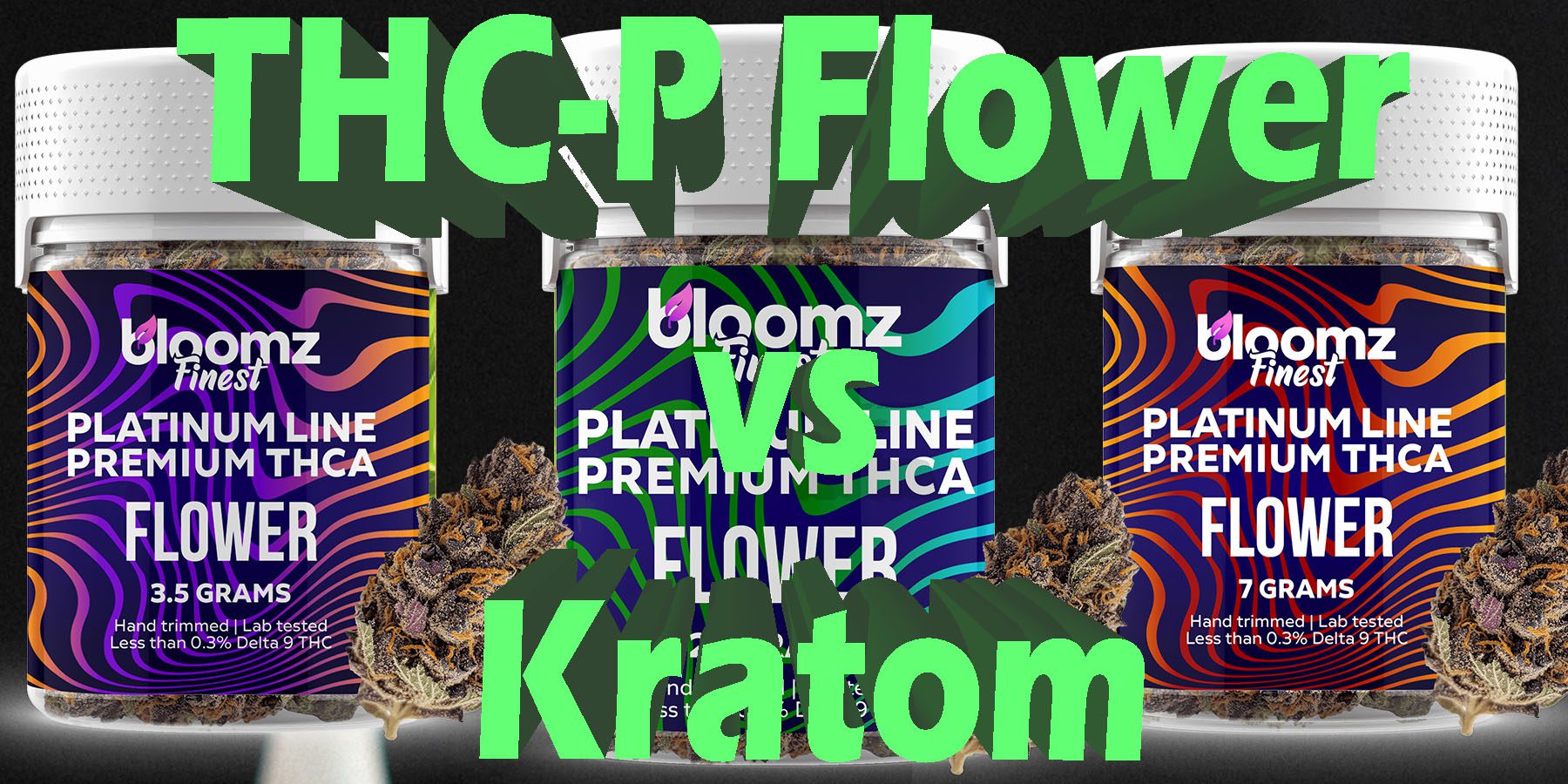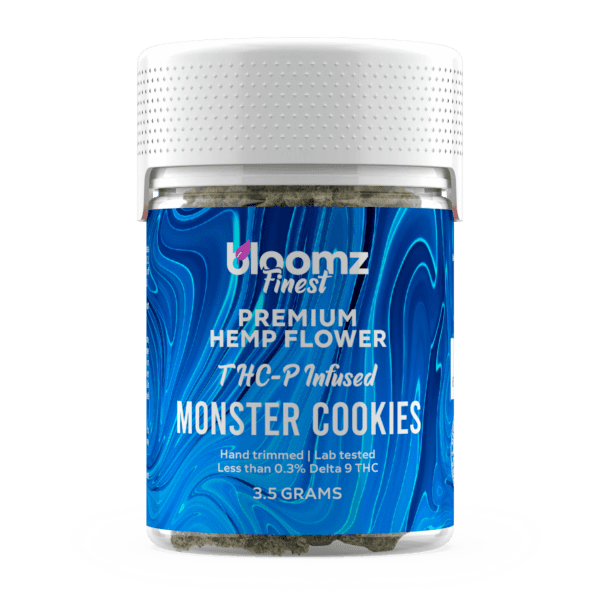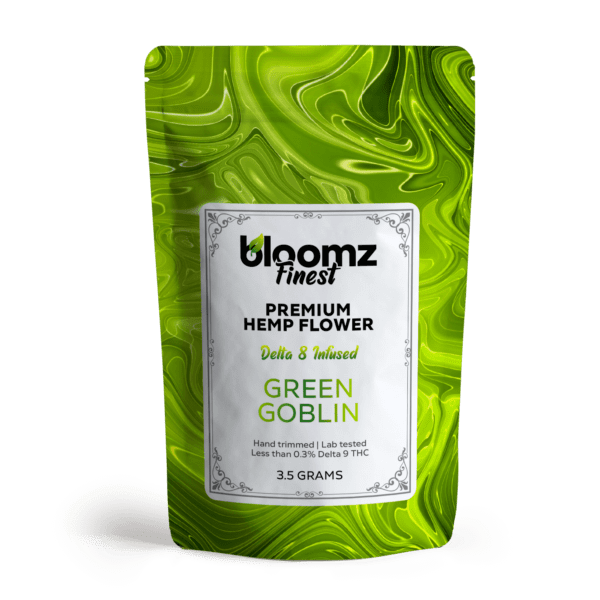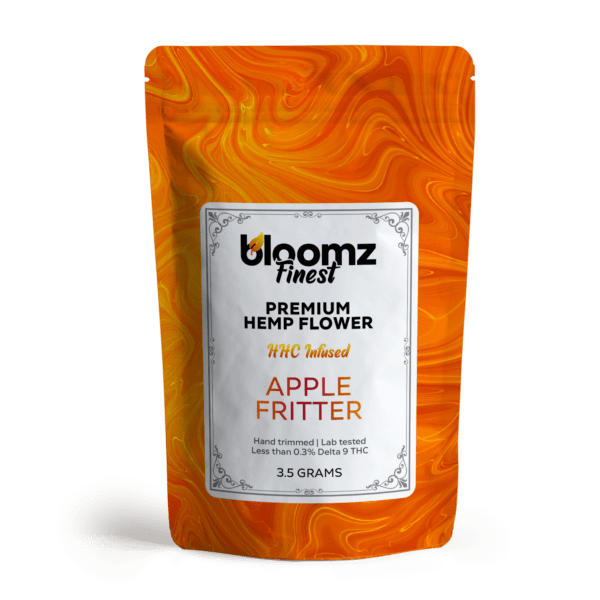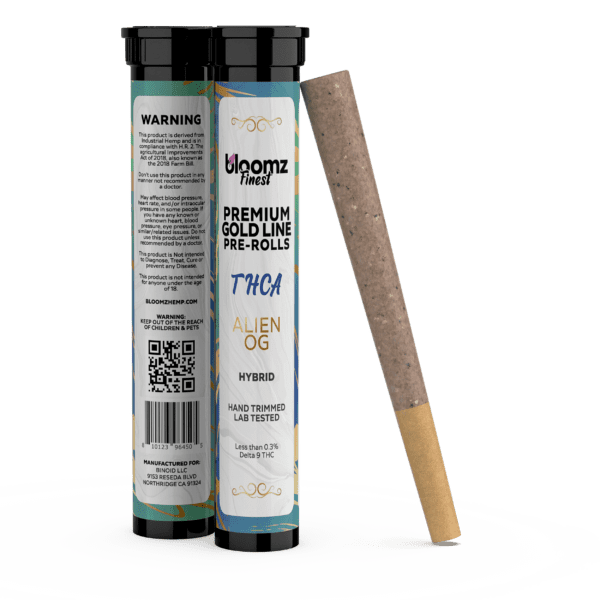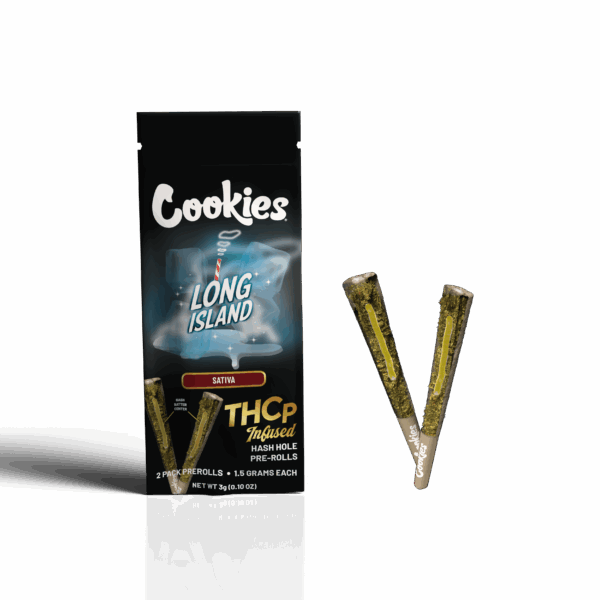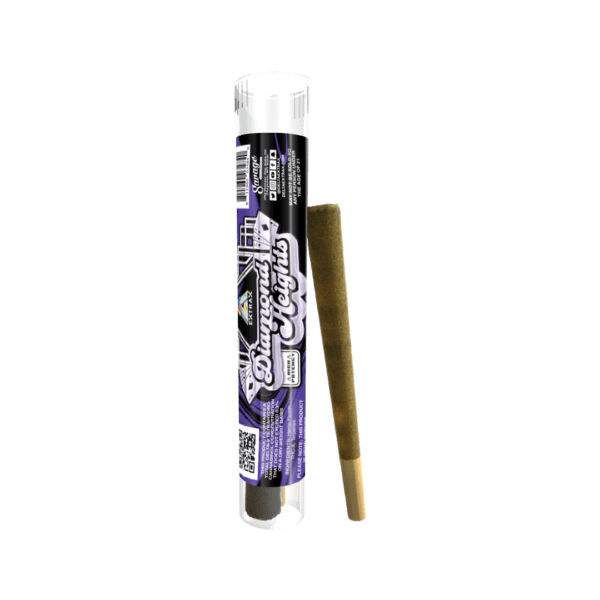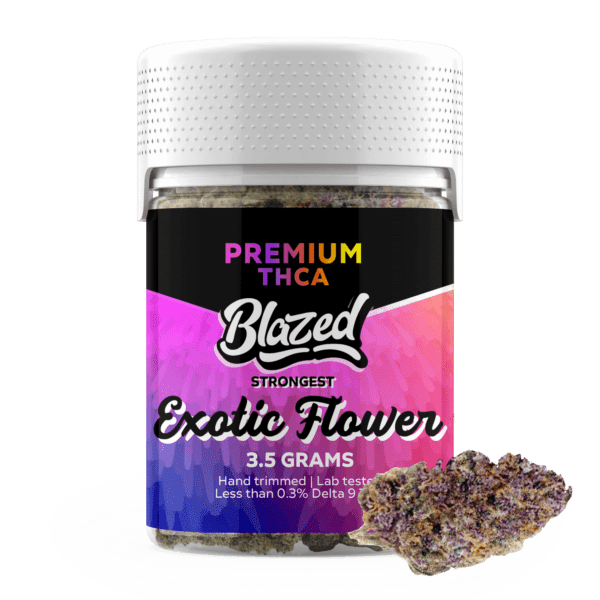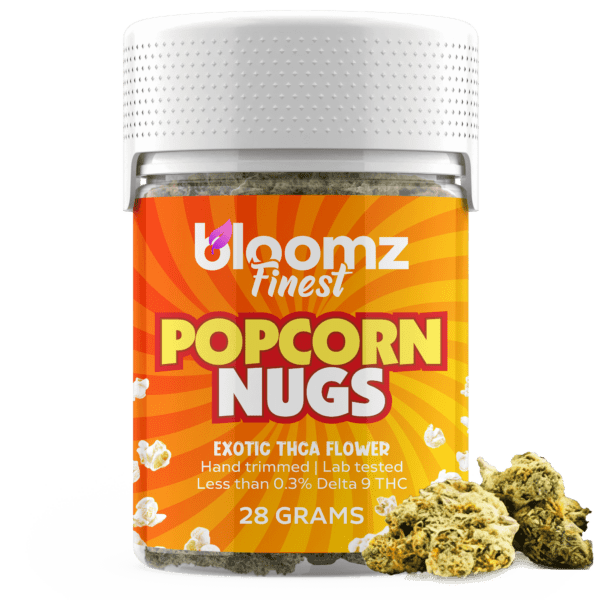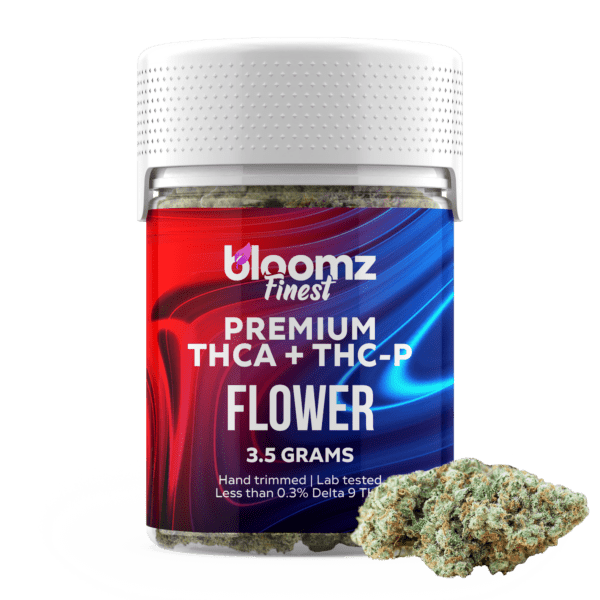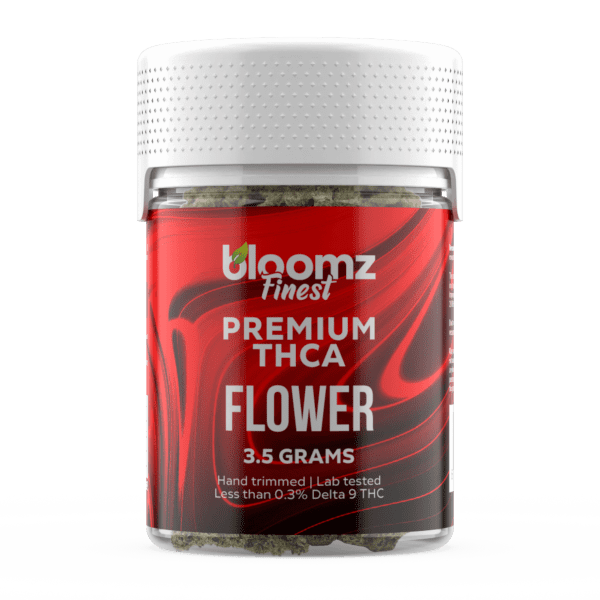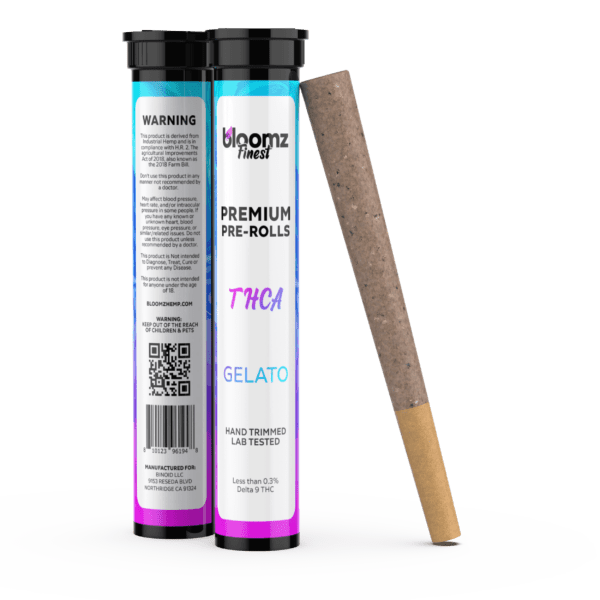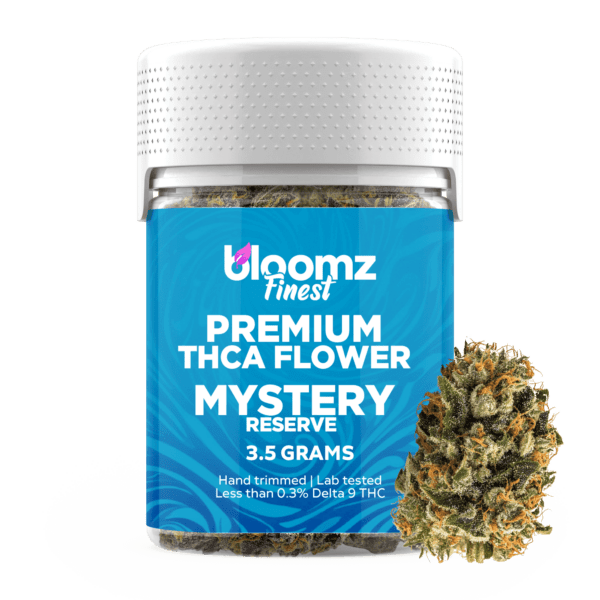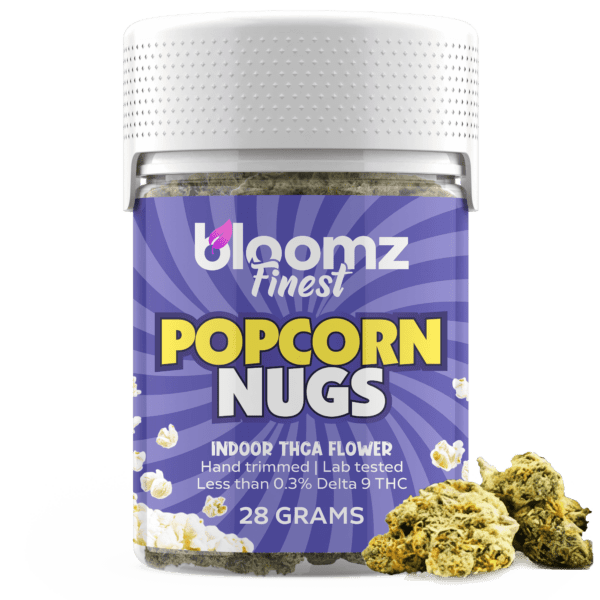In the ever-expanding universe of botanicals and hemp-derived products, a constant search for novel experiences pushes the boundaries of what we thought possible. At the forefront of this exploration stand two titans from entirely different worlds, offering profoundly distinct journeys. On one side is THC-P flower, a marvel of modern cannabinoid science, representing the very pinnacle of potency and the relentless human drive to discover and innovate. It is a product for the seasoned psychonaut, an invitation to experience the cannabis plant’s potential at an intensity previously unknown.
On the other side is Kratom, an ancient ethnobotanical from the verdant rainforests of Southeast Asia, a leaf with a rich history of fostering community and providing a versatile spectrum of effects. This is a compelling matchup between the absolute cutting edge of chemical discovery and the time-honored wisdom of traditional herbalism, a choice between an explosive ascent and a grounded, adaptable path.
TO BUY THC-P FLOWER CLICK HERE
Recommended products
Why It’s Important to Breakdown the Matchup of THC-P Flower vs. Kratom
To compare THC-P flower and Kratom is to compare a lightning strike to the steady flow of a river; both are powerful forces of nature, but their character, intensity, and impact are fundamentally different. A detailed breakdown of this specific matchup is not just helpful, it is an essential exercise in responsible exploration for any curious consumer. The sheer disparity in their potency, origins, and the nature of the experiences they offer makes a well-informed decision absolutely critical. Navigating this choice without a clear understanding of their profiles would be a significant misstep, potentially leading to an experience that is either underwhelming or, more critically, overwhelmingly intense. This comparison aims to provide the clarity needed to choose a path that aligns with one’s own experience level and desired outcome.
A thorough analysis serves to illuminate the crucial distinctions that define these two very different contenders, empowering users to make conscious and safe choices:
-
A Chasm of Potency: The most significant point of differentiation is potency. THC-P is a cannabinoid that is reportedly over 30 times more effective at binding to the body’s cannabinoid receptors than traditional Delta 9 THC, resulting in an experience of incredible intensity. Kratom’s effects, while significant, operate on a completely different and more moderate scale. Understanding this vast difference in power is the most important safety consideration for any potential user.
-
Nature of the Product: It is vital to understand that “THC-P flower” is a manufactured product where hemp flower is infused with a semi-synthetic cannabinoid distillate. Kratom, in its most common form, is simply the raw, ground leaf of a tree. This distinction between a lab-enhanced product and a natural agricultural one has implications for authenticity, purity concerns, and the overall philosophy of use
-
Divergent Chemical Pathways: The effects of THC-P are driven by its unique molecular structure—a long seven-carbon tail that gives it an exceptionally strong affinity for the body’s CB1 receptors. Kratom’s effects are produced by a complex suite of over 40 alkaloids, like Mitragynine and 7-hydroxymitragynine, which interact with a different set of receptors in the brain. They are, chemically speaking, speaking two entirely different languages to the body.
-
Navigating Uncharted Legal Waters: Both products exist in complex legal gray areas. THC-P, due to its extreme potency and semi-synthetic nature, faces significant legal hurdles and has been banned in many jurisdictions despite arguments for its legality under the 2018 Farm Bill. Kratom, while federally legal, faces its own set of state and local bans and ongoing scrutiny from federal agencies. A clear view of their respective legal battles is crucial for any consumer.
Contender #1: THC-P Flower
Stepping into the ring as our first contender is THC-P flower, a true heavyweight and one of the most recent and awe-inspiring discoveries in the world of cannabis science. This is not a cannabinoid for the faint of heart or the inexperienced user; it represents the current summit of potency in the hemp-derived market. THC-P flower is the answer to the question, “What lies beyond the familiar?” It has captivated the attention of cannabis connoisseurs and thrill-seekers who have built up a significant tolerance to other cannabinoids and are seeking a new frontier of profound euphoria and relaxation. The story of THC-P flower is a narrative of scientific breakthrough, a product that pushes the very limits of what we believed a cannabinoid could do, offering an experience that is as intense as it is novel.
Tetrahydrocannabiphorol (THC-P) is a phytocannabinoid that was only officially discovered and isolated in late 2019 by a team of Italian researchers. While it does occur naturally in some cannabis varieties, it is only present in extremely low concentrations, making it impossible to extract for commercial use. The groundbreaking discovery was not just the identification of a new cannabinoid, but the understanding of its unique molecular structure. THC-P is a close relative of Delta 9 THC, but with one critical difference: it possesses a longer alkyl side chain.
While Delta 9 THC has a five-carbon atom chain, THC-P has a seven-carbon atom chain. This seemingly small structural difference has massive implications. Scientific research suggests that this longer chain allows THC-P to bind to the CB1 receptors in the human brain with an affinity that’s over 30x stronger than that of Delta 9 THC. This extraordinary binding affinity is the theoretical basis for its formidable and widely reported psychoactive potency. The THC-P found in consumer products is created via a complex chemical conversion of hemp-derived CBD.
Given that THC-P isn’t naturally abundant, the concept of a “THC-P flower” is similar to that of Delta 8 flower—it is a manufactured, infused product. The process begins not with a plant that grows THC-P, but with a standard, high-quality hemp flower that is rich in CBD or CBG. This beautiful, terpene-rich hemp bud serves as the delivery mechanism for the star of the show. The extraordinarily potent THC-P, which exists as a thick distillate oil after its laboratory conversion from CBD, is then carefully applied to the exterior of the hemp flower.
Recommended products
This creates a final product that has the appearance, aroma, and consumption methods of traditional cannabis, but with effects that are supercharged to an entirely new level. Basically, the creation of THC-P flower is a sophisticated, multi-stage process:
-
Cultivation of the Base Flower: The foundation of any good THC-P flower is a premium hemp flower. Expert cultivators grow specific strains of CBD or CBG hemp, often in controlled indoor environments, to maximize terpene production and create dense, aesthetically pleasing buds.
-
Harvesting and Curing: The mature hemp plants are carefully harvested, trimmed, and then slowly dried and cured. This curing process is essential for developing the flower’s final aroma and flavor profile and ensuring a smooth smoking or vaping experience.
-
Extraction and Conversion to THC-P: In a highly specialized laboratory setting, CBD is extracted from industrial hemp. This CBD is then put through a series of chemical reactions to transform its molecular structure into the desired THC-P molecule. This is a complex and precise process that requires advanced chemical knowledge to perform safely and yield a pure end product.
-
Precise Infusion: Because THC-P is so potent, the infusion process must be done with extreme care. The THC-P distillate, which is often blended with other less potent distillates like Delta 8 to create a more manageable experience, is evenly and lightly applied to the cured hemp flower. The goal is to create a consistent product without oversaturating the buds.
-
Comprehensive Safety Testing: For any reputable brand, the final step is rigorous testing by an accredited third-party lab. This Certificate of Analysis (COA) is critical, as it not only verifies the potency of THC-P and other cannabinoids but must also screen for any residual solvents, heavy metals, or harmful byproducts from the chemical synthesis process.
The market for THC-P flower, while newer and more niche than that for other cannabinoids, offers several product types for consumers. These categories generally refer to the quality of the base hemp flower and the final form of the infused product. Given the extreme potency of THC-P, these products are designed for experienced users and are often positioned as premium, top-shelf offerings within a brand’s lineup. The focus is on delivering a powerful and effective experience, from standard infused buds to ultra-potent specialty items and convenient pre-rolled options:
-
Indoor THC-P Flower: This represents the highest quality available. It uses premium, indoor-grown CBD or CBG hemp as its base. This flower is known for its impeccable appearance, high terpene content, and dense structure. When infused with THC-P, it creates a connoisseur-grade product that offers the best in terms of flavor, smoothness, and a powerful, nuanced experience.
-
Outdoor THC-P Flower: A more budget-conscious option, this type uses sun-grown hemp flower as its foundation. While still effective, the base flower may be less dense and visually perfect than its indoor counterpart. This allows for a more affordable final product for users who are focused primarily on experiencing the unique and powerful effects of the THC-P itself.
-
THC-P Nugs: This is the standard form of THC-P flower, referring to full-sized buds of hemp that have been carefully infused with THC-P distillate. These nugs are what consumers typically purchase when buying the flower in jars or bags, offering a classic cannabis experience in terms of handling and preparation.
-
THC-P Moonrocks: For those seeking the absolute maximum potency, THC-P moonrocks are the ultimate product. These are created in a multi-step process, typically starting with a hemp nug, coating it in a sticky distillate (often a blend of Delta 8 and THC-P), and then rolling the entire creation in a thick layer of CBD or CBG kief. The resulting product is incredibly dense, heavy, and phenomenally potent, demanding respect and extremely cautious use.
-
THC-P Pre-Rolls, Blunts & Joints: Offering convenience and a controlled dose, THC-P pre-rolls are an excellent way to experience this potent cannabinoid without the need for any grinding or rolling. The infused flower is expertly packed into papers or hemp wraps. These are often blended with a higher ratio of regular CBD flower to make the experience more manageable and are a good starting point for those new to THC-P.
The strain names associated with THC-P flower—such as Northern Lights, Sour Tangie, or Wedding Cake—refer to the genetic strain of the base hemp flower used in the product. This underlying strain provides its unique fingerprint of terpenes, which in turn dictates the product’s aroma and flavor profile. While the overwhelmingly powerful effects of the THC-P molecule will be the dominant feature of the experience, the terpenes can still provide subtle nuances and direction. This synergy between the base strain’s character and the intense power of the infused cannabinoid is what creates the final, complex user experience:
-
Indica: When an Indica-dominant hemp strain is used as the base, the goal is to create an experience of profound and immersive relaxation. The characteristic terpenes of Indica strains, known for their earthy and sweet notes, are thought to contribute calming qualities. This pairs synergistically with the intense body high that THC-P can produce, resulting in a product that is best suited for deep relaxation, quiet evenings, and achieving a state of blissful, “chilled out” tranquility.
-
Sativa: Using a Sativa-dominant hemp strain as the base aims to provide a more uplifting and cerebrally expansive experience. The bright, citrusy, and piney terpenes common in Sativa strains are believed to add an energetic and euphoric quality. When combined with the powerful psychoactive effects of THC-P, this can lead to an incredibly creative, euphoric, and mind-bending journey, making it a choice for experienced users during daytime or for engaging with art and music on a deeper level.
-
Hybrid: A Hybrid hemp strain provides a balanced foundation for the intensity of THC-P. By blending the genetics of Indica and Sativa, these strains can offer a nuanced experience that is both relaxing and euphoric without leaning too heavily in one direction. A Hybrid THC-P flower might provide a powerful wave of blissful feelings that permeates both mind and body, making it a versatile if still incredibly potent choice for various recreational settings.
The legal status of THC-P flower in the United States is highly complex and exists in a precarious gray area. The argument for its legality is rooted in the 2018 Farm Bill, which legalized hemp and its derivatives so long as they contain less than 0.3% Delta 9 THC. Since THC-P is a different cannabinoid from Delta 9 THC and is derived from legal hemp, manufacturers operate under the premise that it is a federally compliant hemp product. However, this position is fraught with challenges. The Drug Enforcement Administration’s (DEA) Interim Final Rule has suggested that all “synthetically derived tetrahydrocannabinols” are illegal, and since THC-P is created in a lab via chemical conversion, it could fall under this definition.
Furthermore, its extreme potency has made it a significant concern for state regulators, and many states that have banned Delta 8 THC have extended those bans to include other novel, psychoactive cannabinoids like THC-P. Therefore, its legality is not guaranteed and is subject to a patchwork of state-level laws, requiring consumers to be extremely diligent in verifying the laws in their specific location.
Recommended products
Given its extraordinary potency, the purposes for using THC-P flower are centered on achieving a powerful and profound psychoactive experience. The methods of consumption are identical to those for other cannabis flowers, but the approach to dosing must be radically different. Caution is the guiding principle, and even seasoned cannabis veterans are strongly advised to start with the smallest possible amount to gauge their individual reaction. A single puff of a THC-P pre-roll or a tiny piece of a bud may be more than sufficient to produce strong effects:
-
Vaping (using a portable or desktop vaporizer): Vaping is an excellent method for consuming THC-P flower as it allows for a degree of temperature control and provides a smoother, more flavorful experience that highlights the terpenes of the base flower. It also makes it slightly easier to microdose, as a user can take a very small, short inhalation and wait to assess the effects before proceeding, which is a highly recommended practice with this cannabinoid.
-
Smoking: Smoking THC-P flower in a pipe, bong, or joint is a highly effective and rapid delivery method, with effects setting in almost instantly. This is the most traditional way to consume flower, but it also makes it very easy to consume too much too quickly. Users should treat a THC-P joint with immense respect, taking only one small puff and waiting at least 20-30 minutes before considering another.
-
Cooking/Baking: Using THC-P flower to make edibles is possible but should only be attempted by the most experienced users with a very high tolerance and a deep understanding of cannabinoid cooking. The potency of THC-P is amplified in edible form, and the effects are extremely long-lasting. Dosing would need to be done with microscopic precision to avoid an uncomfortably intense and prolonged experience. This method carries the highest risk and requires the most caution.
THC-P flower’s overall effects are almost universally described as a significantly intensified and prolonged version of the Delta 9 THC experience. Due to its powerful affinity for the CB1 receptors, users can expect a rapid onset of an incredibly strong psychoactive journey. This often includes an overwhelming sense of euphoria and bliss, a profound and heavy body sensation that can be deeply relaxing, and significant alterations in sensory perception, where colors, sounds, and textures may seem more vivid and intense.
Many users also report a more psychedelic or mentally expansive quality to the experience compared to traditional THC. One of the most notable characteristics is the duration; the effects of THC-P are known to last much longer than those of other cannabinoids, sometimes for many hours. It is an immersive, powerful, and all-encompassing experience that’s once again, strictly for advanced users who are prepared for a new level of intensity.
Pros & Cons
The arrival of a cannabinoid as powerful as THC-P brings with it a very distinct and polarized set of pros and cons. Its advantages are almost entirely centered on its unprecedented potency and the unique experience it offers. Conversely, its drawbacks are also directly tied to this same potency, as well as its novelty and uncertain legal standing. A clear-eyed evaluation of these points is crucial before venturing into this high-intensity territory.
Pros:
-
Unparalleled Potency: The most obvious advantage of THC-P is its sheer strength. For experienced cannabis users with a very high tolerance, THC-P offers a way to achieve profound effects that other cannabinoids may no longer provide. It breaks through tolerance ceilings, delivering a powerful and effective experience that is second to none in the hemp-derived market.
-
A Novel and Unique Experience: As a recently discovered cannabinoid, THC-P provides a new and different kind of psychoactive journey. Many users describe it as being more nuanced or having a different character than traditional THC, sometimes with more mentally expansive qualities. For connoisseurs who have explored the cannabis spectrum extensively, it offers a genuinely new frontier to discover.
-
Requires Only a Very Small Amount: Because it is so potent, a very small amount of THC-P flower is needed to produce strong effects. A single product can last a user a very long time, as a dose might be a fraction of what one would normally consume. This efficiency can make it a cost-effective choice in the long run for high-tolerance users.
-
Extremely Long-Lasting Effects: The experience from THC-P is known for its remarkable duration, with effects that can last for many hours. For users seeking a prolonged period of deep relaxation or euphoria, this is a significant benefit. It allows for an extended session from a single dose, making it suitable for a day dedicated to leisure or creative pursuits.
-
The Federal Legality Argument: Like other hemp-derived cannabinoids, THC-P’s existence in the market is based on the 2018 Farm Bill. This legal argument, though highly contested, provides the basis for its sale and allows for its availability online and in shops in states that have not explicitly banned it, offering access where state-legal marijuana is not an option.
-
Accessibility in Non-Banned States: In jurisdictions where it remains legal, THC-P flower products are readily accessible through a variety of online retailers. This allows curious and experienced consumers in many parts of the country to legally purchase and explore this novel cannabinoid from the convenience of their homes, something unimaginable just a few years ago.
-
Synergy with the Base Flower: The fact that THC-P is infused onto a terpene-rich hemp flower means the user gets a complex, full-spectrum experience. The unique aroma and flavor from the base strain’s terpenes can complement and add nuance to the powerful effects of the THC-P. This synergy creates a more well-rounded and aromatic experience than consuming a pure distillate.
-
Profound Euphoria and Relaxation: For those prepared for its intensity, THC-P can deliver a state of bliss and relaxation that is truly profound. Users often report an overwhelming sense of well-being, a melting away of physical tension, and a powerful, happy euphoria. It is highly effective at producing the deeply “chilled out” state that many recreational users seek.
-
Pushes Cannabinoid Science Forward: The discovery and synthesis of THC-P represent a significant step forward in our understanding of the cannabis plant and its constituents. Its existence encourages further research into how the structure of a cannabinoid affects its interaction with the human body, paving the way for future discoveries and a deeper appreciation of the plant’s complexity.
-
Variety of Infused Strain Options: The infusion process allows for a wide array of choices. Consumers can select THC-P flower that uses their favorite Indica, Sativa, or Hybrid hemp strains as a base. This allows for a degree of customization, enabling users to pair the intense effects of THC-P with the terpene profiles they already know and love.
Cons:
-
Extreme Potency Can Be Overwhelming: The greatest strength of THC-P is also its most significant risk. Its incredible potency can easily be too much for most users, leading to an uncomfortable, anxious, or paranoid experience. The risk of “greening out” is substantially higher, and for those who are not prepared, the intensity can be deeply unpleasant and unsettling.
-
Highly Uncertain and Risky Legal Status: THC-P exists in a very precarious legal gray area. Its semi-synthetic nature and extreme psychoactivity make it a prime target for state and federal bans. Purchasing or possessing it carries a significant legal risk, as laws can change rapidly, and its status under the DEA’s interpretation of the law remains a serious, unresolved issue.
-
Significant Lack of Research and Safety Data: As a very new discovery, there is an almost complete lack of long-term research on THC-P and its effects on the human body. While it is structurally similar to THC, its long-term safety profile is completely unknown. Users are essentially venturing into uncharted territory, and the potential for unknown health risks cannot be discounted.
-
A Heavily Processed, Infused Product: For those who value natural, whole-plant products, THC-P flower falls short. It is a hemp flower that has been augmented with a cannabinoid created through a complex chemical process in a laboratory. This high degree of processing and its semi-synthetic origin can be a major drawback for purists and those who prefer to consume botanicals in a more natural state.
Recommended products
-
Exotic THCA Pre-Rolls Gold Line – 3-Pack/6 Pack
$36.99$69.99 -
THC-P HashHole Pre-Rolls – Cookies
$19.99$24.99 -
THCA Pre-Rolls with THCA Diamonds – Cookies
$17.99$21.90 -
THCA Pre-Rolls | Diamond Heights – Extrax
$17.99$23.99
Contender #2: Kratom
Our second contender, Kratom, emerges from the lush, tropical rainforests of Southeast Asia, a world away from the cannabis fields and processing laboratories. Known scientifically as Mitragyna speciosa, this botanical is not a recent discovery but a cornerstone of traditional culture with a history stretching back centuries. It is the leaf of a tall evergreen tree, a member of the same botanical family as coffee, that has been used by indigenous populations for its unique and versatile properties.
In the modern global marketplace, Kratom has carved out a significant niche, attracting a dedicated following of individuals who are drawn to its complex profile of effects. It presents a starkly different botanical experience from THCA flower, rooted in a different chemical makeup, a different cultural heritage, and a different relationship with the human body.
Kratom is a natural botanical substance derived from the leaves of the Mitragyna speciosa tree, which is native to countries like Thailand, Indonesia, Malaysia, Myanmar, and Papua New Guinea. The defining characteristic of Kratom lies in its rich and complex alkaloid profile. The leaves contain more than 40 different alkaloids, but two, in particular, are responsible for the majority of its effects: Mitragynine and 7-hydroxymitragynine. These compounds are unique in that they interact with some of the same receptors in the brain as opioids, yet they are structurally distinct and produce a different spectrum of effects.
Mitragynine is the most abundant alkaloid, making up a significant portion of the leaf’s active content, while 7-hydroxymitragynine is present in much smaller quantities but is significantly more potent. The interplay between these and other minor alkaloids is what gives Kratom its signature dose-dependent effects, a duality that sets it apart from many other botanicals. This unique mechanism of action is central to understanding both its appeal and the controversies surrounding it.
The history of Kratom is deeply woven into the cultural fabric of Southeast Asia, where its use is not a modern trend but a practice passed down through generations. For centuries, rural laborers, farmers, and fishermen in these regions have chewed the fresh leaves of the Mitragyna speciosa tree to combat fatigue, increase endurance, and improve productivity during long, arduous workdays under the hot sun. The stimulating properties of the fresh leaves were a natural part of daily life. Beyond its use for physical stamina, Kratom also played an important social and ceremonial role.
It was traditionally prepared as a tea and served to guests as a sign of hospitality, used in local village gatherings, and incorporated into traditional folk medicine rituals. The knowledge of the tree, its different vein types, and preparation methods was communal wisdom. Its journey to the Western world began much more recently, primarily in the early 21st century, as travelers and the internet facilitated the global exchange of information about unique botanicals. This introduction sparked widespread interest, transforming Kratom from a regional traditional herb into a global commodity.
One of the most fascinating aspects of Kratom is the classification of its leaves based on the color of the central vein that runs down the middle. These vein colors—Red, White, and Green—are generally believed to correspond to the leaf’s maturity at the time of harvest and are associated with a distinct spectrum of effects. This color system is the primary way consumers navigate the Kratom market to find a product that aligns with their desired experience. While the exact science is still being explored, this traditional classification has proven to be a reliable guide for millions of users, with each color offering a unique character and purpose:
-
Red Vein: Red Vein Kratom is harvested from the most mature leaves on the Mitragyna speciosa tree, where the veins have taken on a reddish hue. This type is by far the most popular and widely available on the market. It is universally associated with calming, soothing, and relaxing effects. Users often turn to Red Vein strains to unwind in the evening, promote a sense of tranquility, and achieve a state of serene contentment. Due to its deeply relaxing nature, it is generally considered unsuitable for activities that require high energy or sharp focus. Popular Red Vein strains include Red Bali, Red Borneo, and Red Maeng Da.
-
White Vein: Harvested from the youngest leaves on the tree, White Vein Kratom is considered to be the opposite of Red Vein. It is best known for its stimulating, energizing, and mood-lifting properties. Many users compare the effects of White Vein to a strong cup of coffee, but without the jitteriness or subsequent crash that can sometimes accompany caffeine. It’s a popular choice for morning use to kick-start the day, for powering through a midday slump, or for any situation that calls for increased focus, motivation, and a positive outlook. Popular strains include White Maeng Da and White Borneo.
-
Green Vein: Positioned perfectly between the calming Reds and the stimulating Whites, Green Vein Kratom is harvested from leaves at the midpoint of their life cycle. As such, it is renowned for its balanced and moderate effects. Green Vein strains are often described as providing a gentle boost of energy and focus while simultaneously promoting a sense of positive well-being and subtle relaxation. This versatility makes it a favorite among both new and experienced users, as it is suitable for a wide range of situations, from social gatherings to tackling daily tasks, without being overly sedating or overly stimulating. Green Malay and Green Maeng Da are classic examples of this balanced variety.
-
Yellow/Gold Vein: Yellow or Gold Vein Kratom is somewhat of an enigma, as it is not a natural vein color. Instead, it is the result of a specialized drying and curing process. Often, it begins as a Red or Green Vein leaf (or a blend of multiple colors) that undergoes a unique, often proprietary, fermentation or extended sun-drying technique. This process is believed to alter the alkaloid profile of the leaves, resulting in effects that are distinct from the primary three colors. Users often describe Yellow/Gold strains as being particularly euphoric and long-lasting, offering a unique blend of relaxation and mood enhancement.
Beyond the fundamental vein colors, the world of Kratom is further diversified by a vast number of named strains. These names often refer to the geographical region where the Kratom was grown or to a specific processing method that gives the product its unique characteristics. Much like the concept of “terroir” in wine or coffee, the specific soil composition, climate, and harvesting techniques of a region are believed to impart a unique alkaloid signature to the Kratom leaves. This results in a rich tapestry of options, allowing users to explore subtle variations in effects to find the perfect strain that resonates with their individual needs and preferences:
-
Maeng Da: This is not a geographical location but a Thai term that roughly translates to “pimp grade,” signifying a product of high quality and potency. Maeng Da is typically created through grafting, a technique where tissues of different plants are joined to breed a new, more potent variant. It is available in Red, White, and Green varieties, and across the board, Maeng Da strains are known for being stronger and more pronounced in their effects than their standard counterparts, making them a favorite among experienced Kratom users.
-
Bali: Often one of the first strains new users encounter, Bali Kratom is well-known for its deeply relaxing properties, particularly Red Bali. Despite its name, most Bali Kratom is believed to be cultivated in Borneo and other parts of Indonesia, with Bali historically being a major shipping port from which it was exported. It is considered a classic and reliable choice for those seeking profound calmness and a sense of well-being.
-
Borneo: As the name suggests, this Kratom originates from the massive island of Borneo, which is one of the largest Kratom-producing regions in the world. Borneo strains are available in all colors and are known for their consistent and well-rounded effects. Red Borneo is highly sought after for relaxation, while White and Green Borneo are praised for their clean, balanced energy and mood enhancement.
-
Indo: Short for Indonesia, Indo Kratom refers to strains sourced from the various islands of this archipelago. Indo strains are generally considered to be potent but less overwhelming than some other varieties like Maeng Da or Thai. They are often described as providing very smooth and long-lasting effects, making them a good choice for users who want a sustained experience without intense peaks and valleys.
-
Malay: Hailing from Malaysia, Malay Kratom is particularly famous for its longevity. Users frequently report that the effects of Malay strains, especially the popular Green Malay, last significantly longer than other varieties. Green Malay is celebrated for its perfect balance of gentle energy, positive mood, and subtle relaxation, making it one of the most versatile and highly-regarded strains on the market.
-
Thai: Traditionally grown in Thailand (though most Thai strains are now cultivated in Indonesia due to past legality issues in Thailand), this Kratom is historically associated with highly stimulating effects. White and Green Thai are renowned for providing a powerful burst of energy and focus, making them ideal for demanding physical or mental tasks. Red Thai, conversely, offers a unique experience, blending the relaxing properties of a red vein with a notable euphoric quality.
-
Bentuangie: This is a specific type of fermented Kratom. It is typically a Red Vein strain that undergoes a special fermentation process where the fresh leaves are packed into bags, allowing them to cure and ferment before being dried. This process is believed to enhance the concentration of certain alkaloids, particularly 7-hydroxymitragynine, resulting in a strain that is exceptionally calming and soothing.
-
Sumatra: Originating from the Indonesian island of Sumatra, these strains are known for producing effects that are both potent and enduring. The island’s unique climate and soil contribute to a distinct alkaloid profile. Sumatra strains are available in all vein colors, with Red Sumatra being prized for its deeply relaxing properties and White Sumatra being sought after for its smooth, sustained energy.
In the modern market, Kratom is available in a diverse range of product forms, catering to a wide spectrum of consumer preferences for convenience, taste, and method of delivery. While traditional use involved chewing fresh leaves or brewing a simple tea, today’s processing techniques have expanded the possibilities significantly. This evolution has made Kratom more accessible and palatable to a Western audience that may be unaccustomed to the raw, earthy taste of the plant material. From fine powders and pre-measured capsules to flavored drinks and potent extracts, there is a Kratom product to fit nearly every lifestyle and need:
-
Powders: This is the most common and traditional form of Kratom sold today. The dried leaves are ground into a very fine, talc-like powder. This form offers the most versatility and is typically the most cost-effective. Users can mix the powder into beverages like orange juice or smoothies, brew it into a tea, or use the “toss and wash” method, which involves placing a dose of powder in the mouth and washing it down with liquid. Powder allows for precise, customizable dosing.
-
Capsules: For those who cannot stand the bitter, earthy taste of Kratom powder, capsules are an ideal solution. They contain pre-measured amounts of powder enclosed in a digestible gelatin or vegetarian capsule. This method is incredibly convenient, discreet, and completely masks the flavor. The only downsides are that capsules can be more expensive than raw powder and the effects may take slightly longer to kick in as the capsule needs to dissolve in the stomach first.
-
Gummies: A relatively new and increasingly popular innovation, Kratom gummies offer a tasty and approachable way to consume Kratom. These products are infused with a precisely dosed amount of Kratom extract, and the flavor of the gummy effectively conceals the plant’s natural bitterness. They are easy to dose, portable, and provide a familiar consumption experience for those accustomed to other types of gummy supplements, making them an excellent entry point for curious new users.
-
Drinks/Beverages/Shots: Ready-to-drink Kratom products are designed for maximum convenience and rapid effects. These often come in the form of small, concentrated “shots” or larger, seltzer-style beverages. They are typically made with a potent Kratom extract, allowing a significant dose to be delivered in a small volume of liquid. Often flavored with fruit juices or other ingredients, they are a fast and easy way to consume Kratom on the go.
-
Disposable Vape Pens: The inhalation of Kratom via vape pens is a very recent and highly controversial development. These products claim to vaporize Kratom alkaloids for inhalation. However, this is the least common form of consumption, and its safety and efficacy are not well-studied or understood. The high temperatures involved in vaping could potentially destroy the delicate alkaloids, and the long-term effects of inhaling Kratom are completely unknown, making it a method that most experienced users and safety advocates advise against.
-
Tinctures & Extracts: Kratom extracts are highly concentrated products created by isolating the active alkaloids from the raw leaf material. This results in a product that is many times stronger than an equivalent weight of plain leaf powder. Extracts are available as liquids (tinctures), powders, or resinous solids. They are intended for experienced users only, as their potency requires very careful and precise dosing to avoid overwhelming effects. Tinctures are often sold in dropper bottles, allowing for micro-dosing.
The legal status of Kratom in the United States is a complex and often contentious issue. At the federal level, Kratom is currently legal to buy, sell, and possess. However, it is not regulated by the Food and Drug Administration (FDA), which has issued numerous warnings about the substance and has not approved it for any use. The Drug Enforcement Administration (DEA) considered placing Kratom’s active alkaloids on the Schedule I list of controlled substances in 2016 but withdrew its intent following significant public and political backlash. Despite its federal legality, the regulatory landscape is a fractured patchwork at the state and local levels.
Several states—including Alabama, Arkansas, Indiana, Rhode Island, Vermont, and Wisconsin—have passed laws making Kratom illegal. Furthermore, some counties and cities in otherwise legal states have enacted their own local bans. In response to the threat of prohibition, the American Kratom Association has championed the Kratom Consumer Protection Act (KCPA), which is state-level legislation designed to regulate the industry by imposing rules on testing, labeling, and age restrictions (typically 18 or 21). Several states have already passed the KCPA, creating a regulated and safer market for consumers in those areas.
Kratom’s effects are famously defined by the dose taken, creating a unique biphasic experience that sets it apart from many other botanicals. This dose-dependent duality is the cornerstone of its versatility. At lower doses, typically just a few grams of powder, Kratom tends to produce stimulating effects. Users often report feeling more energetic, alert, sociable, and focused, similar to the experience of a strong cup of coffee or a caffeinated beverage. This makes lower doses popular for daytime use, for tackling work or chores, or for enhancing social interactions.
As the dosage increases, the character of the experience undergoes a profound shift. At these higher doses, the stimulating properties recede and are replaced by predominantly sedating and euphoric effects. Users report feelings of deep physical relaxation, a serene sense of calm, and a warm, blissful state of contentment. The experience can become intensely tranquil, making higher doses exclusively suitable for evening relaxation or quiet, inactive periods. This wide spectrum, from a morning motivator to an evening unwinder, is all contained within the same leaf, with the user’s chosen dosage acting as the key to unlock the desired effect.
Pros & Cons
Kratom’s journey from a traditional Southeast Asian herb to a widely used botanical in the West has been accompanied by a great deal of debate. To form a complete picture, it’s essential to examine both the positive aspects that have drawn millions of people to it and the significant concerns that have been raised by regulators and health officials. Its profile of pros and cons is distinctly different from that of THC-P flower, reflecting its unique chemistry, legal status, and cultural context.
Pros:
-
Accessibility in Legal Areas: In the many states and municipalities where it has not been banned, Kratom is widely and legally available. It can be purchased from a variety of vendors, including specialized online retailers, local smoke shops, and even some convenience stores. This accessibility makes it a readily available option for adults who live in jurisdictions where it is permitted, without the need for any special license or prescription. This stands in contrast to the more limited availability of cannabis products in many parts of the country.
-
Wide Spectrum of Reported Effects: Kratom’s signature dose-dependent nature is perhaps its greatest asset. The ability of a single substance to be stimulating and focus-enhancing at one dosage level and deeply relaxing and soothing at another makes it incredibly versatile. This allows users to tailor their experience to their specific needs throughout the day, using it as a coffee alternative in the morning and as a way to unwind in the evening. This broad spectrum of potential effects is a key reason for its enduring popularity.
-
Variety of Strains and Consumption Methods: The Kratom market offers an impressive amount of choice. Users can select from dozens of strains, from Maeng Da to Bali, and a spectrum of vein colors, each offering a subtle variation on the core effects. Furthermore, the proliferation of product types—from traditional powders and capsules to modern gummies and beverages—means there is a consumption method to suit almost any preference for taste, convenience, and discretion. This variety allows for a highly personalized user experience.
-
Natural, Plant-Based Botanical: Kratom is a natural product, derived directly from the leaves of the Mitragyna speciosa tree without the need for complex chemical alterations. For many individuals who prefer to use plant-based botanicals, this is a significant advantage. The fact that it has been used in its natural form for hundreds of years in its native regions provides a sense of historical precedent and authenticity that many users find appealing.
-
Rich History of Traditional Use: Unlike many novel products on the market, Kratom has a long and well-documented history of use in Southeast Asian cultures. For centuries, it has been an integral part of daily life for laborers and a component of social rituals, used for stamina, mood, and community bonding. This long history provides a valuable cultural context and suggests a long-standing relationship between this plant and human societies, which many users find reassuring.
-
Discreet and Convenient Usage Options: While using raw Kratom powder can be messy and has a strong taste, the availability of capsules, gummies, and liquid shots makes consumption remarkably discreet and convenient. These forms produce no smell, require no extra paraphernalia, and can be consumed quickly and easily in almost any setting without drawing attention. This makes it a more practical option than HHC flower for individuals who require subtlety in their botanical use.
-
Affordability of Raw Leaf Powder: Compared to many other botanical products on the market, Kratom in its raw powder form is often very affordable. Because it is a relatively simple agricultural product that can be harvested and processed in large quantities, the price per gram can be quite low, especially when purchased in bulk. This cost-effectiveness makes it an accessible option for people from a wide range of economic backgrounds.
Cons:
-
Lack of Federal Regulation and Quality Control: Because the FDA does not regulate Kratom, there is a significant lack of oversight in the industry. This “wild west” environment means that the quality, purity, and potency of products can vary wildly between vendors. Without mandatory third-party testing, some products may be contaminated with harmful substances like heavy metals or salmonella, or their alkaloid content may be inconsistent. This places a heavy burden on the consumer to find and vet reputable vendors who voluntarily adhere to high quality control standards.
-
Uncertain and Patchwork Legality: The legal status of Kratom is inconsistent and precarious. While it remains legal at the federal level, the handful of state-wide bans and numerous city and county prohibitions create a confusing legal minefield for consumers. The constant threat of new legislation and the ongoing negative attention from federal agencies like the FDA mean that its legal status could change abruptly, making its future availability uncertain. Users must remain vigilant about the laws in their specific location.
-
Potential for Dependence and Withdrawal: One of the most significant concerns associated with Kratom is its potential for habit formation with frequent, long-term use. Because its primary alkaloids interact with the body’s opioid receptors, daily use can lead to physical dependence. If a dependent user suddenly stops taking Kratom, they can experience a range of uncomfortable withdrawal symptoms. This risk necessitates responsible use, including taking regular breaks and avoiding daily consumption.
-
Unpleasant Taste and Social Stigma: For many people, the taste of raw Kratom powder is extremely bitter and unpleasant, making it difficult to consume without mixing it into strongly flavored beverages. Beyond the taste, Kratom is often misunderstood by the general public and has been the subject of negative media attention. This can create a social stigma around its use, leading to judgment or misunderstanding from friends, family, or employers who are not familiar with the substance beyond sensationalized headlines.
-
Risk of Overwhelming Effects from Extracts: The availability of highly concentrated Kratom extracts poses a significant risk, especially for new or inexperienced users. These products are many times more potent than the plain leaf, and it is very easy to accidentally take too much. An excessive dose of Kratom, particularly an extract, can lead to extremely unpleasant effects often referred to as the “wobbles,” which can include dizziness, nausea, and vomiting. This underscores the importance of careful dosing and treating extracts with extreme caution.
How to Go About Choosing Which Option
The choice between THC-P Flower and Kratom is one of the most starkly contrasted decisions a consumer can make in the botanical space. This is not a choice between subtle variations of a similar effect; it is a choice between two entirely different dimensions of experience, governed by radically different potencies. The right decision hinges on an honest and thorough self-assessment of one’s own experience level, tolerance, and desired outcome. There is no universally “better” product, only the product that is appropriate for the individual’s specific circumstances. Navigating this choice requires caution, respect, and a clear understanding of what each contender truly offers.
The single most important factor in this decision is your experience level and tolerance for intense psychoactive effects. THC-P flower is an extremely potent product that should only be considered by veteran cannabis users who have a very high tolerance and are comfortable with powerful, immersive, and long-lasting psychoactive states. For beginners, or even intermediate users, THC-P carries a very high risk of being overwhelming and producing an unpleasant experience. Kratom, on the other hand, is far more approachable. Its dose-dependent nature allows a new user to start with a very small, stimulating dose and gradually explore its more relaxing properties, offering a much wider margin for error.
Once you have assessed your experience level, consider the desired mental and physical state. Are you seeking an explosive, perception-altering journey into profound euphoria? THC-P is engineered for precisely this purpose. Or are you looking for a more functional tool—something to provide a clean boost of energy for a project, or a gentle sense of calm and well-being to unwind in the evening? Kratom’s versatile spectrum is perfectly suited for these more moderate and adaptable applications. Finally, as with any unregulated product, you must consider the legal risks and the burden of verifying product safety through third-party lab tests, a necessity for both of these substances.
|
Feature |
THC-P Flower |
Kratom |
|---|---|---|
|
Primary Active Compound |
Tetrahydrocannabiphorol (THC-P) |
Mitragynine & 7-Hydroxymitragynine |
|
Potency Level |
Extremely High (reportedly 30x+ binding affinity of Delta 9 THC). |
Moderate and dose-dependent. |
|
Core Experience |
Intensely psychoactive, euphoric, long-lasting, and perception-altering. |
Biphasic: stimulating at low doses, sedating at high doses. |
|
Recommended User |
Advanced, high-tolerance cannabis veterans only. |
Beginners to advanced users, with caution. |
|
Product Nature |
Hemp flower infused with semi-synthetic THC-P distillate. |
Dried, powdered leaf from the Mitragyna speciosa tree. |
|
Legal Status |
Federally legal (highly disputed); banned or restricted in many states. |
Federally legal (unregulated); banned in several states and municipalities. |
|
Safety Concerns |
Lack of research; risks of residual solvents from chemical conversion. |
Risks of biological/heavy metal contaminants; dependence with heavy use. |
|
Origin |
A very recent (2019) scientific discovery. |
An ancient botanical with centuries of traditional, cultural use. |
The Summit or the Trail: A Decision of Scale
In the final analysis, the choice between THC-P flower and Kratom is a decision of scale and intent. THC-P represents the summit, the highest peak of cannabinoid intensity currently known—a breathtaking view that is thrilling to behold for the few who are prepared for the arduous and risky climb. Kratom represents the winding trail through the foothills and valleys below—a journey with varied scenery, offering gentle inclines for energy or serene clearings for rest, accessible to a much wider range of travelers. One is an exploration of the extreme, a test of limits. The other is an exploration of balance, a tool for navigating the terrain of daily life. The wisdom lies not in judging the path, but in knowing yourself well enough to choose the one that leads to your desired destination safely.
TO BUY THC-P FLOWER CLICK HERE
Recommended products
-
THCA Flower – Indoor Exotics – Gold Line
$37.99$69.99 -
THCA Flower – Platinum Line
$49.99$79.99 -
THCA Flower – Mystery Reserve
$41.99$79.99 -
THCA Smalls
$149.99$256.99

